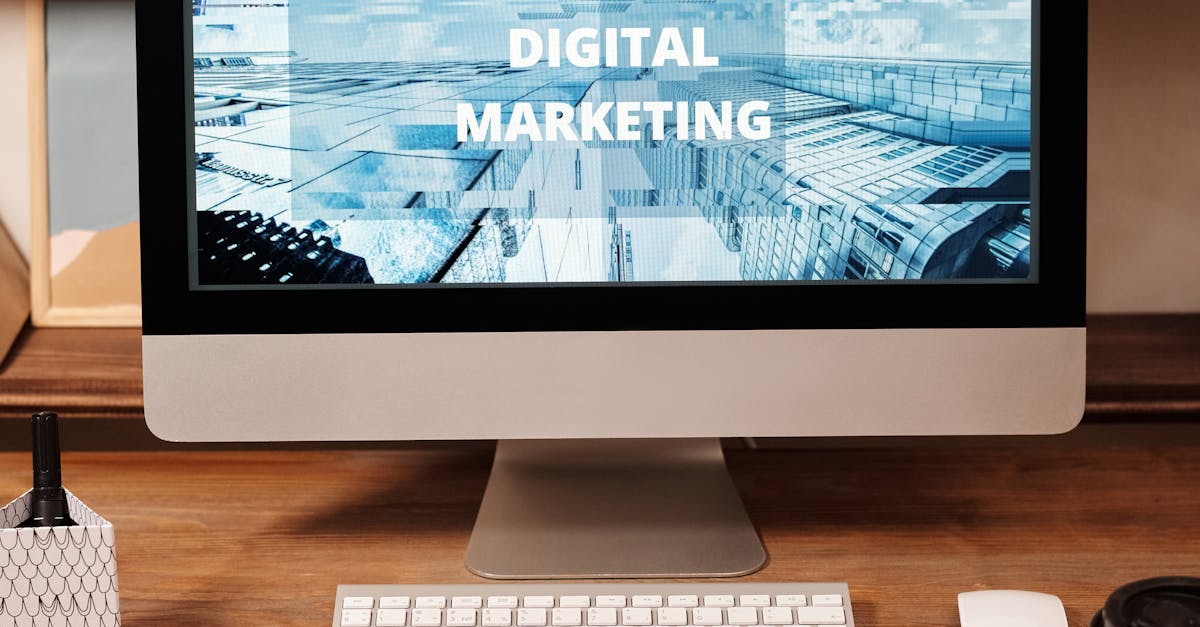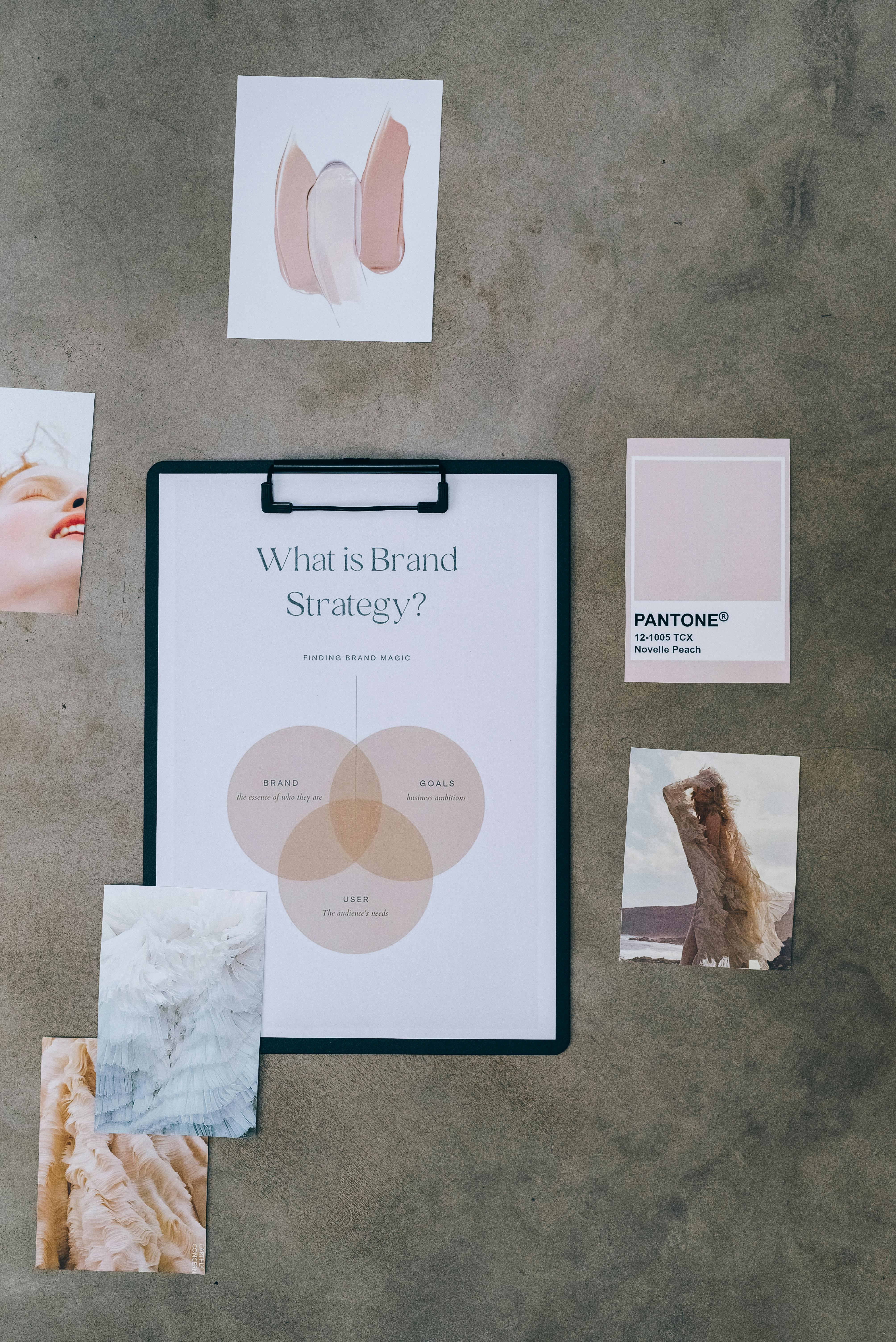We've upgraded our file system to make things even more secure. You can keep uploading the same way you always do - no changes needed. If you experience any issues, please get in touch with us at info@dumontprinting.com, and we'll address the matter promptly. Thank you for partnering with us!
How to Design Impactful Marketing Materials That Drive Business Results

Designing marketing materials that truly resonate with your audience is both an art and a science. When we set out to create impactful materials, we start by understanding our target audience and the objectives of our campaign. This initial phase lays the groundwork for every design decision and ultimately drives better business outcomes. With the right mix of creativity, strategy, and data, you can transform simple flyers, brochures, and digital ads into powerful assets that generate leads and drive revenue.
Understanding Your Audience and Objectives
The foundation of designing effective marketing materials is a clear understanding of your audience. Who are they? What challenges do they face? What motivates them to act? We at Dumont Printing work closely with businesses to ensure that every design element is aligned with the audience’s preferences and the overall campaign goals. By starting with a clear objective, whether it’s to boost brand awareness, generate leads, or drive conversions, you create a focused approach that resonates from the very first glance.
- Identify Your Audience: Develop detailed customer personas that include demographics, interests, and buying behaviors. This helps tailor your messaging to speak directly to their needs.
- Set Clear Objectives: Whether it’s engaging new customers or reinforcing brand loyalty, having measurable targets will streamline your design strategy.
- Define the Campaign’s Purpose: Every piece of material should have a clear focus. Are you introducing a new product, promoting a service, or building brand identity?

Developing a Cohesive Design Strategy
A cohesive design strategy is essential to ensure that the marketing materials not only look visually appealing but also support a consistent message across all channels. We recommend starting with a solid framework that includes brand guidelines, visual identity elements, and a hierarchy of information. This integrated approach helps maintain consistency from digital ads to printed pamphlets.
Consider these key principles when developing your design strategy:
- Visual Hierarchy: Organize information so that the most important messages are the most prominent. Use size, color, and placement to guide the viewer’s eye.
- Consistent Branding: Make sure that your colors, fonts, and logos align with your established brand identity. This builds trust and helps in brand recognition.
- Balanced Use of Space: A well-spaced design prevents clutter, making it easy for the audience to absorb your message.
- Incorporate Storytelling: Visual narratives can captivate the viewer. Integrate images and graphics that tell a story about your brand’s values, mission, or journey.
Remember that a great design never overshadows the message. The key is to enhance communication rather than distract from it.
Choosing the Right Format and Materials
Marketing materials come in a variety of formats—both digital and print. Each format has its unique strengths, and selecting the right one can make all the difference in how your message is received. For example, printed materials such as brochures, business cards, or banners exude a tangible presence that can leave a lasting impression. On the other hand, digital materials such as interactive PDFs and email campaigns facilitate quick updates and analytics tracking.
When choosing a format, consider the following:
- Print Materials: Ideal for local events, tradeshows, or direct mail campaigns. High-quality printed products communicate professionalism and attention to detail. For instance, a well-designed brochure can capture the essence of your business and leave a memorable impression with potential clients.
- Digital Formats: Great for interactive content, emails, and social media. They enable you to update content in real time and integrate multimedia elements like videos and animations.
- Hybrid Solutions: Combining both digital and print elements can maximize reach. Including QR codes in printed materials gives your audience an easy transition to digital engagement.
For example, if you are planning an event or a local campaign, consider leveraging high-impact printed materials that can be distributed physically, and integrate them with your digital channels for a seamless brand experience.

Harnessing the Power of Visual Storytelling
Visual storytelling is more than just images and graphics—it’s about conveying a compelling narrative that connects with your audience on an emotional level. A well-crafted story can elevate your marketing materials from mundane to memorable. To do this effectively, you need to integrate design with storytelling elements.
- Create a Narrative Arc: Even in a short brochure or flyer, there’s room to tell a story. Start with a strong opening that grabs attention, follow with key messages that build interest, and end with a clear call to action.
- Use Emotionally Engaging Visuals: Choose photographs and graphics that evoke the right emotions. Whether it’s trust, excitement, or a sense of urgency, your visuals should mirror the feelings you want your audience to experience.
- Highlight Customer Successes: While we don’t rely on fabricated numbers, real testimonials and authentic success snippets add credibility to your campaign.
By merging storytelling with smart design, you create a narrative that is not only visually engaging but also deeply personal and relatable.
Tips for Optimizing Your Marketing Materials for Conversions
It’s not enough for your marketing materials to look pretty—they need to drive action. Conversion optimization is the process of making sure every element on your material encourages the viewer to take the next step. Here are some practical tips to ensure your designs are conversion-focused:
- Clear and Compelling Calls-to-Action (CTAs): Your CTA should be prominent and unambiguous. Whether it’s inviting the audience to call a number, visit a website, or sign up for a service, clarity is key.
- Readable Fonts and Contrasting Colors: Ensure that your text stands out against the background. A strong color contrast can improve readability and draw attention to important information.
- Strategic Placement: Place critical information above the fold so that it’s immediately visible. The first few seconds of interaction are crucial.
- Test Multiple Versions: Small changes in layout, color, or text can have significant impacts on engagement. Consider running A/B tests to determine what works best for your audience.
When designing materials, keep in mind that subtle tweaks can lead to significant improvements in conversion rates. We have seen firsthand how repositioning a CTA or adjusting the text hierarchy can create a more engaging user experience.
Integrating Design Principles with Business Goals
A successful marketing campaign marries design with business objectives. It’s about more than just aesthetics—each design element should serve a purpose and contribute to the overall strategy. We focus on aligning key design principles with your business goals, ensuring that every brochure, flyer, or digital ad is not only attractive but also effective.
- Focus on Clarity: All elements should contribute to a clear, unified message. Avoid clutter and keep the design focused on your primary objectives.
- Build Trust Through Quality: High-quality materials reflect the professionalism of your brand. Investing in quality printing and design tools is an investment in your business reputation.
- Experiment and Iterate: Marketing is an evolving practice. Regularly review and refine your materials based on feedback and performance metrics.
At each step of the design process, ask how the changes you’re making help drive the desired business outcome. When every design decision is tied to an actionable objective, your marketing materials can become a powerful driver of business success.

Measuring Performance and Iterating Your Designs
No marketing campaign should be a one-and-done effort. It’s critical to continuously measure the performance of your materials and make data-driven decisions for improvement. Tracking metrics such as response rates, conversion rates, and engagement levels can provide actionable insights that help refine your approach.
- Implement Analytics: Whether you’re using unique URLs, QR codes, or integrated digital tracking methods, capturing performance data is essential to understanding how your materials are performing.
- Collect Feedback: Direct feedback from customers and team members can highlight areas for improvement that data alone may not reveal.
- Make Incremental Changes: Small, iterative tweaks often lead to steady improvements. As data comes in, adjust layout, color schemes, or messaging to better align with audience preferences.
- Review and Refresh: Set a schedule for reviewing your content. Regular audits can help ensure that your materials remain relevant and effective in a rapidly changing market.
This continuous cycle of testing, learning, and refining is at the heart of a successful marketing strategy. By treating your design as an evolving process, you maximize long-term impact and drive sustained business growth.
Avoiding Common Pitfalls in Marketing Material Design
Even with the best planning, there are several common pitfalls that can dilute the effectiveness of your marketing materials. Being aware of these issues can help you steer clear of mistakes that reduce clarity and weaken your message.
- Overloading the Design: Too much information or visual clutter can overwhelm your audience. Stick to essential details and ensure that every element serves a clear purpose.
- Inconsistent Branding: Mixing fonts, colors, or imagery styles can confuse your audience. Consistency builds credibility and reinforces your brand identity.
- Neglecting Mobile Users: With an increasing number of users engaging via mobile devices, ensure your materials are optimized for smaller screens without losing impact.
- Ignoring the Call-to-Action: Every piece of marketing material should drive an action. Make your CTA clear and enticing to maximize engagement.
By avoiding these common mistakes, you set the stage for creating materials that not only attract attention but also convert interest into tangible results.
Taking a Strategic Approach to Printing
For many businesses, print remains a vital component of their marketing strategy. The tactile experience of a well-produced brochure or flyer can leave a lasting impression that digital formats sometimes struggle to achieve. At Dumont Printing, we understand the nuances of printed marketing materials and the importance of achieving a flawless output that truly represents your brand.
Consider these tips when preparing your design for print:
- High-Resolution Images: Ensure that all images and graphics are high resolution, which translates into sharp, professional prints.
- Color Accuracy: Invest time in understanding color profiles. Print colors can vary based on materials and ink; a color-calibrated design process minimizes discrepancies.
- Paper Selection: The tactile quality of your printed materials can enhance or detract from your message. Choose a paper stock that reflects the quality and tone of your brand.
- Proofing and Testing: Always request a proof before final production. This step helps catch errors and ensures that the finished product aligns with your expectations.
For businesses looking for reliable printing services, our team at Dumont Printing is committed to helping you produce high-quality marketing materials that reflect the professionalism and creativity of your brand.
Innovative Trends in Marketing Material Design
The landscape of marketing design is constantly evolving, with new technologies and design trends emerging every year. Staying updated on the latest innovations can provide you with fresh ideas and help you differentiate your materials in a crowded market.
- Interactive Designs: With advancements in digital printing and augmented reality, interactive marketing materials such as AR-enabled brochures or QR code integrations are becoming more popular. These tools can engage your audience in novel ways and add a layer of digital interactivity to traditional print media.
- Eco-Friendly Materials: Sustainability is a growing concern for many businesses and consumers. Consider using recycled papers or eco-friendly inks to not only support environmental initiatives but also to appeal to eco-conscious customers.
- Minimalistic Aesthetics: Clean, minimal designs often resonate well because they allow the message to stand out. This design philosophy also tends to translate better across different formats and mediums.
- Personalization: Tailoring your marketing materials to specific customer segments can increase relevance and engagement. Variable data printing, for example, allows you to customize content for different audiences without the need for multiple print runs.
Keeping an eye on these trends not only helps you remain competitive but also opens up opportunities to experiment with innovative methods that can lead to breakthrough results in your marketing efforts.
Implementing a Workflow for Continuous Improvement
The process of designing impactful marketing materials does not end once the final version is printed or published. A proactive workflow that encompasses review, feedback, and iteration ensures that your materials evolve alongside your business and market trends.
- Establish a Feedback Loop: Regularly review the performance of your materials with your team and incorporate feedback from both clients and end-users. This helps identify what works and what needs improvement.
- Set Regular Review Periods: Scheduling quarterly or biannual audits of your marketing materials allows you to stay current and consistent with your branding recommendations.
- Leverage Data Analytics: Use metrics and analytics tools to gain insights into engagement and conversion patterns. This data is invaluable when refining your design elements, messaging, and placement strategies.
With this adaptive approach, you ensure that your marketing materials remain fresh, effective, and aligned with both your branding and broader business goals.
Conclusion: Bridging Design and Business Impact
Creating marketing materials that drive business results is a multifaceted challenge that requires a deep understanding of your audience, a strategic approach to design, and ongoing refinement. By focusing on clarity, consistency, and high-quality design, you can ensure that your marketing materials not only catch the eye but also move your audience to action.
At Dumont Printing, our goal is to help you bring these strategies to life. We combine years of expertise in commercial printing with a passion for creative design to deliver marketing materials that truly resonate. Whether you’re a small startup or a large corporation, investing in the right design strategy can be a game changer for your business.
If you’re ready to take your marketing materials to the next level, explore our range of custom printing services and discover how a strategic design approach can transform your business results. Learn more about our services at Dumont Printing and let us guide you toward achieving lasting impact with your marketing campaigns.
In today’s fast-paced market, every detail matters. When design meets strategy, and when every element is intentionally crafted, marketing materials become powerful tools for growth—tools that tell your brand story with authenticity and precision. By continually refining your approach and staying true to your brand, you can create a lasting connection with your audience and drive tangible business success.
